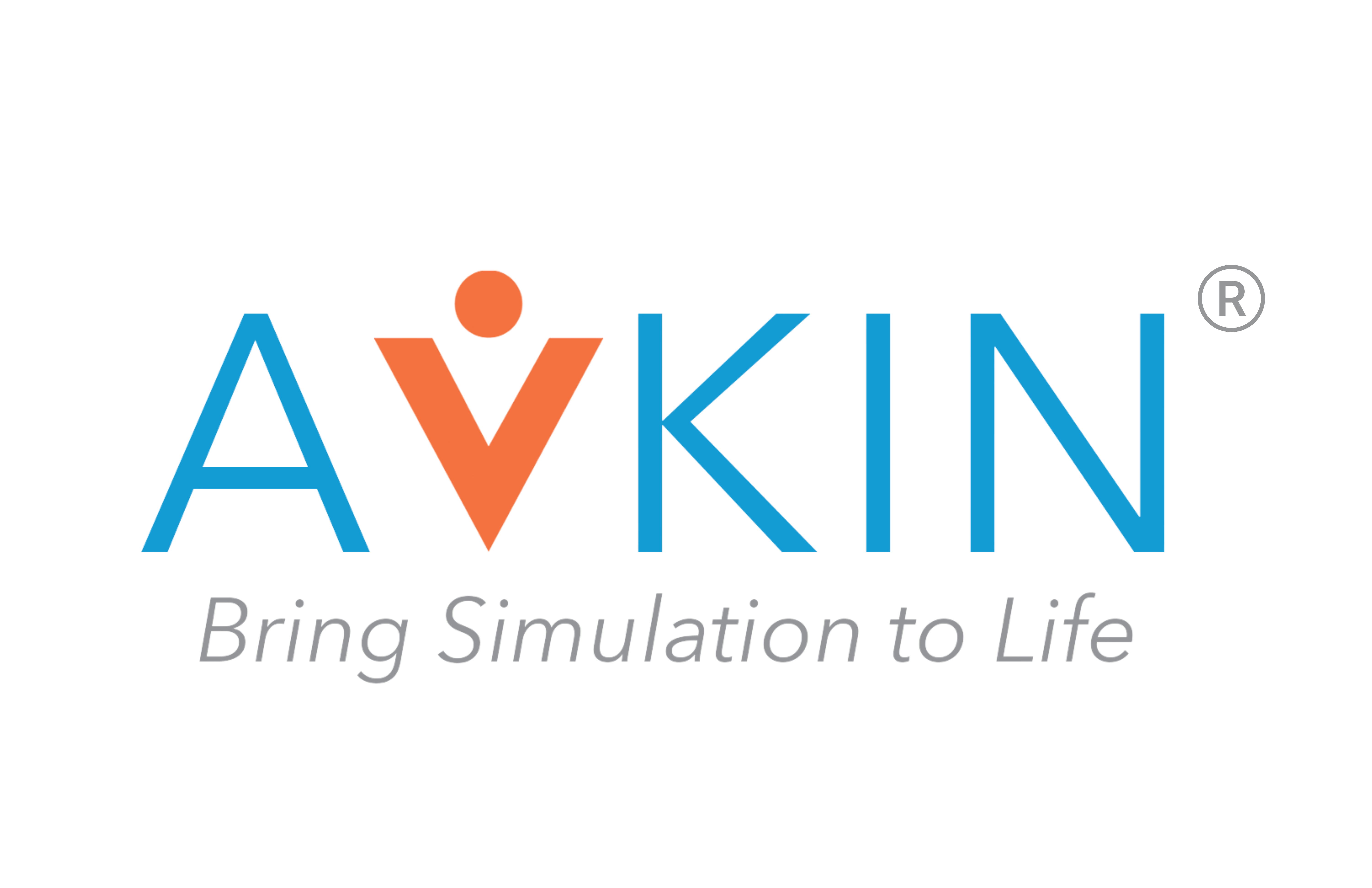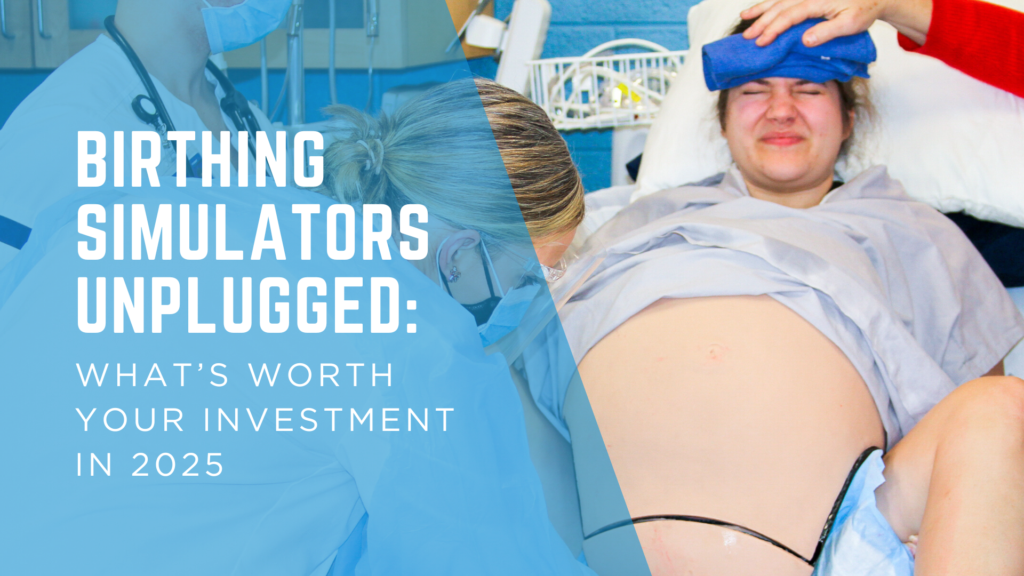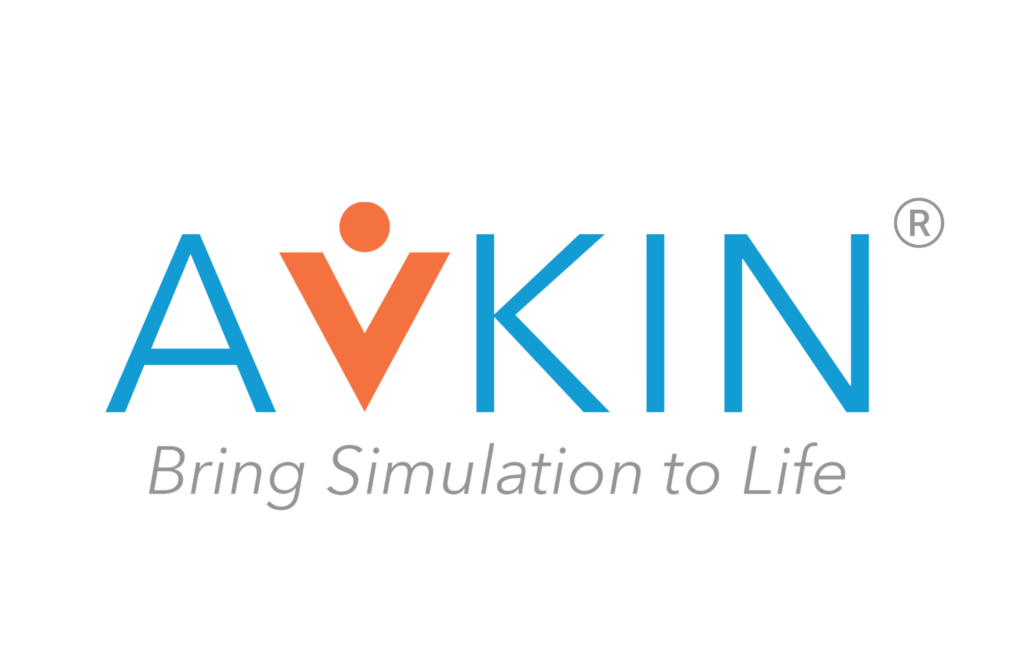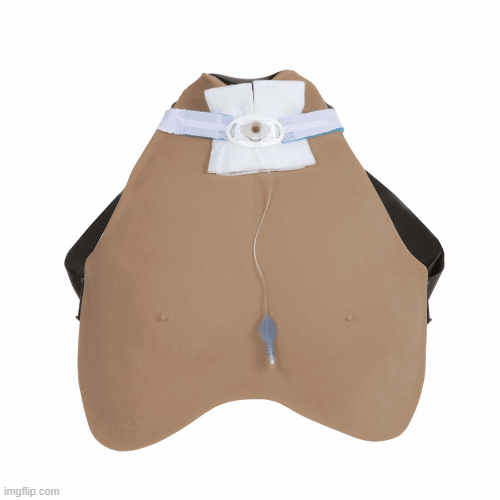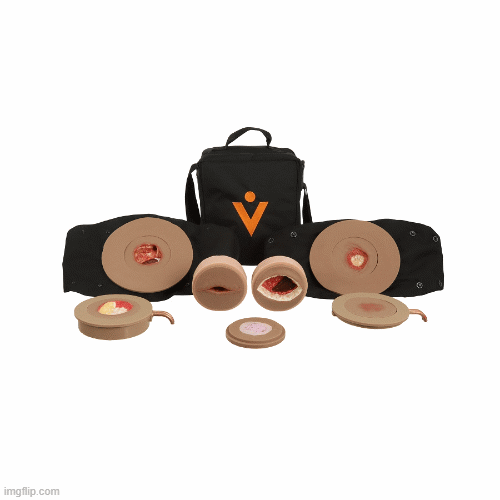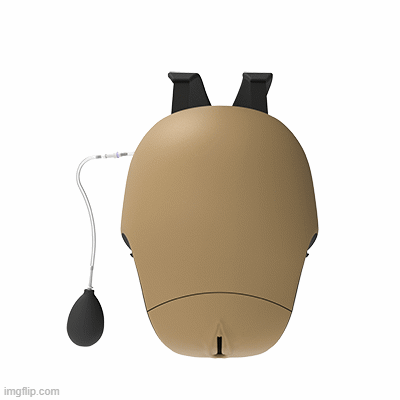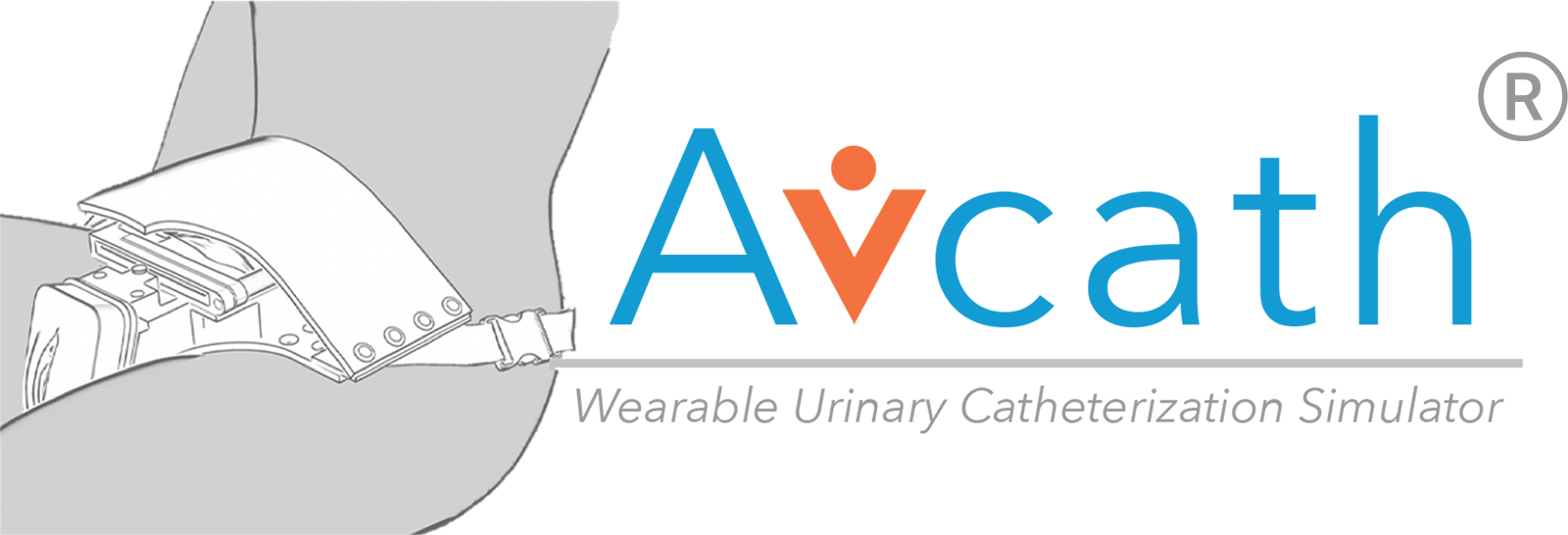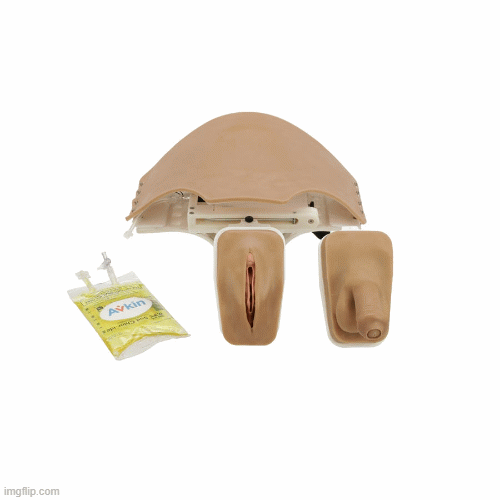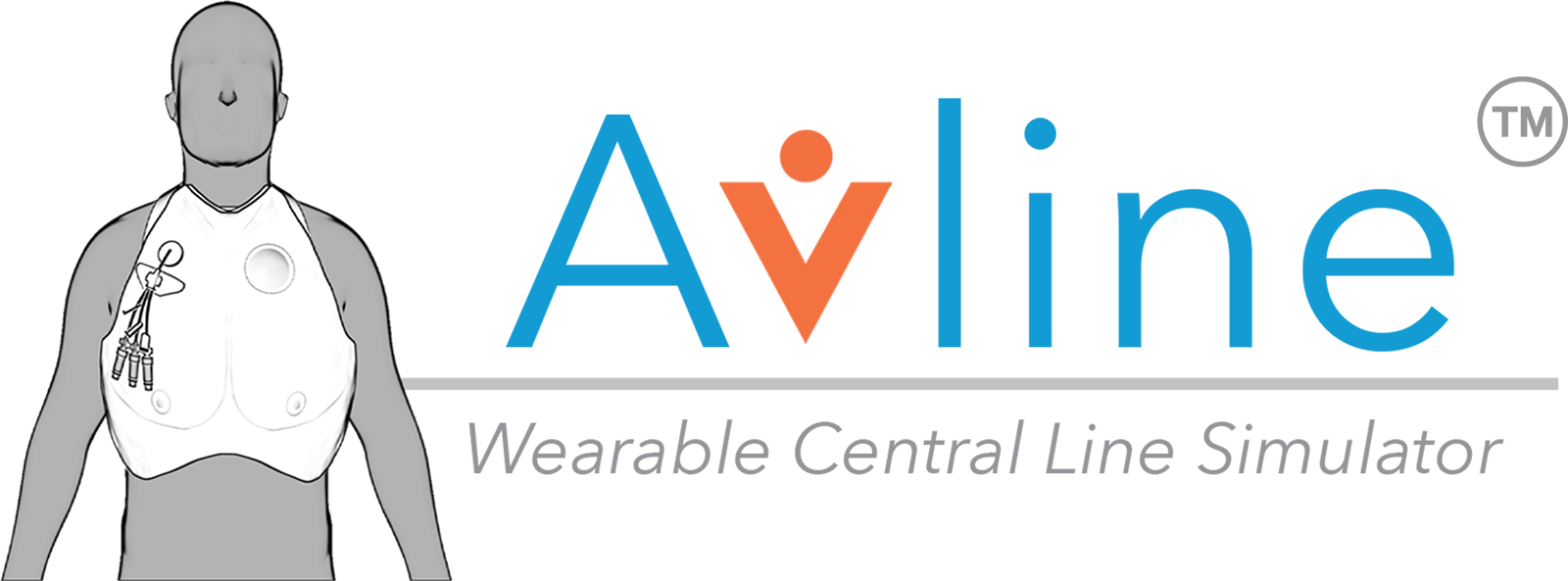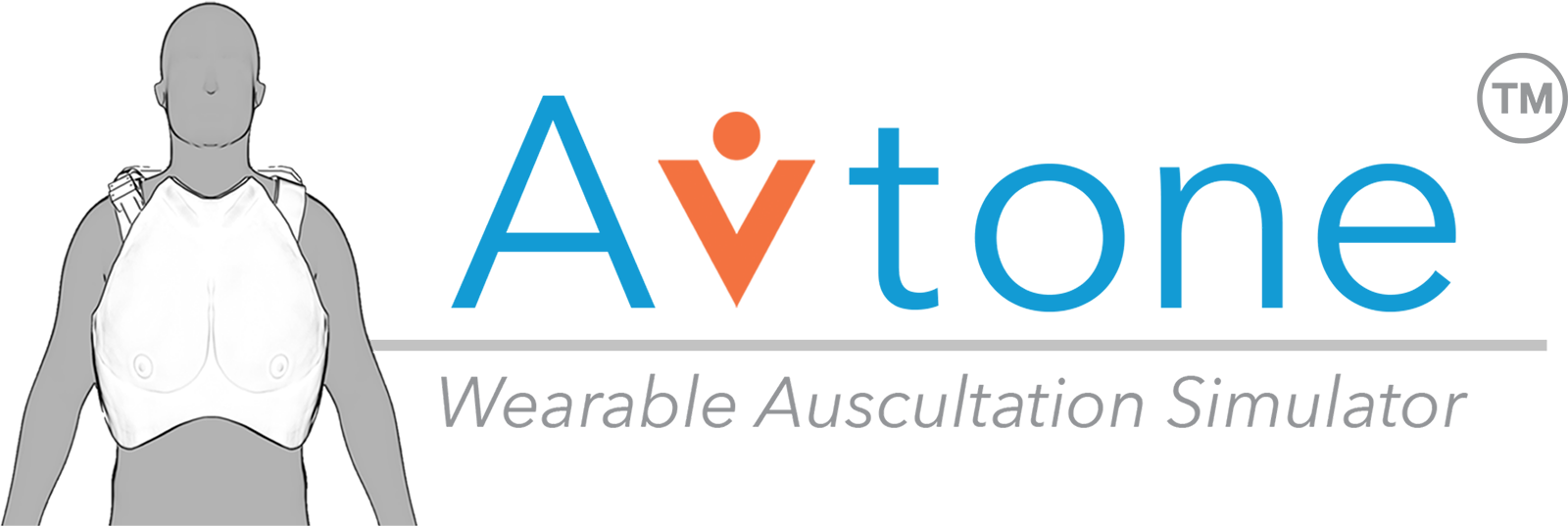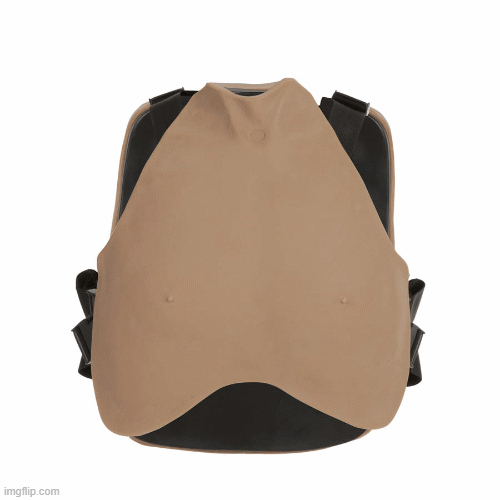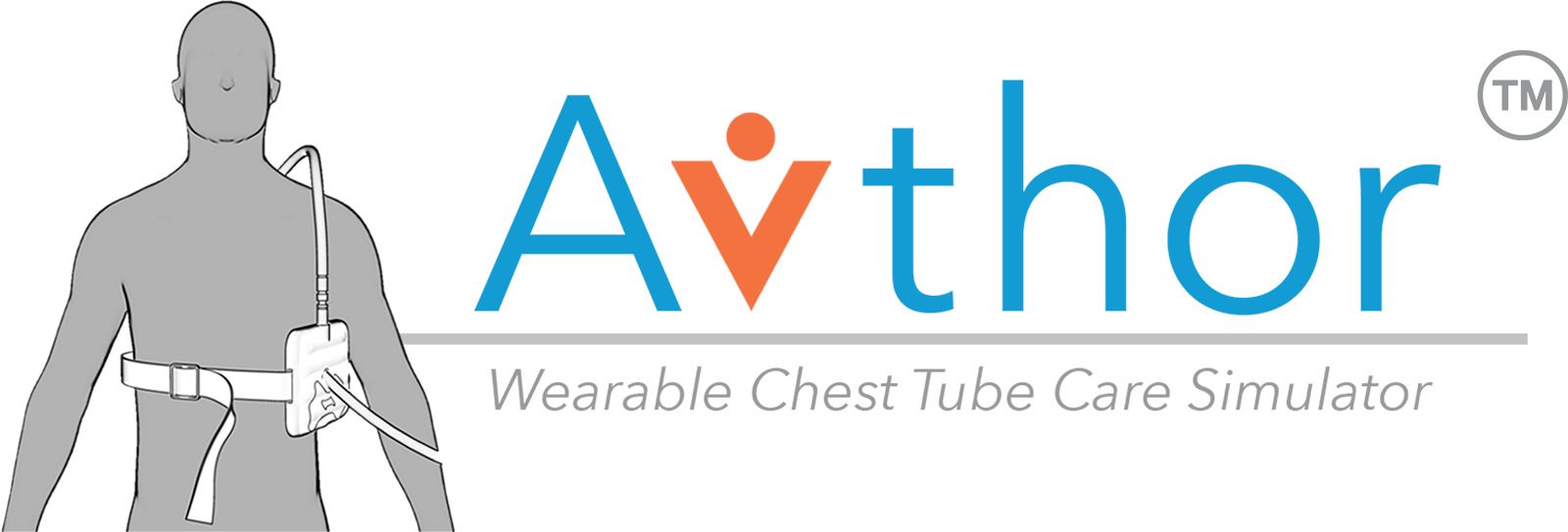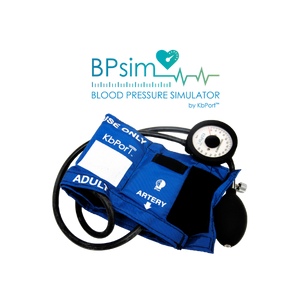Birthing Simulators Unplugged
With more birthing simulators on the market than ever before, choosing the right one can feel overwhelming—especially when you’re balancing clinical needs, student engagement, and budget. In this episode of Simulation Nation, hosts Amy Cowperthwait CEO, RN, MSN, CNS, CHSE-A and Megan Weldon, CHSE take an unfiltered look at today’s top birthing simulators, from high-fidelity manikins to low-cost wearables and everything in between.
Whether you’re equipping a high-tech sim lab or looking for cost-effective solutions, this breakdown highlights what’s worth the investment—and what might just be smoke and mirrors. Realism, empathy, communication, and return on investment are all on the table as Amy and Megan help you cut through the sales talk and get to what really matters: preparing students to care for real birthing patients.
1. High-Fidelity Maternity Manikins
Victoria (Gaumard), Lucina (Elevate), MamaAnne (Laerdal)
High-fidelity maternity manikins are designed to provide comprehensive, full-body simulation experiences that replicate the mechanics of childbirth and obstetric emergencies. These advanced models are useful for practicing rare events in a controlled setting, though they often come with limitations in realism, learner engagement, and cost. Some of the most used high-fidelity maternity manikins include: Victoria from Gaumard, Lucina from Elevate Helathcare, and MamaAnne from Laerdal.
✔ Pros
• Capable of simulating postpartum hemorrhage and shoulder dystocia
• Breech delivery scenarios supported
• Palpable contractions
• Basic baby capabilities (weight and anatomical landmarks)
✖ Cons
• Learners often report frustration due to lack of realism
• Limited flexibility in birthing positions
• No communication element with a live person
• Full-body format significantly increases costs
• Repairs can be costly and time-consuming
✅ Victoria (Gaumard)
Battery Life: 10 hours
Market: Advanced Practice
Cost: $80,000–$90,000
✔ Product-Specific Pros
• Advanced baby features including crying, cyanosis, and force sensors
• Optional C-section module
• Supports shoulder dystocia indicators like “turtle sign” and decreased fetal heart rate
✖ Product-Specific Cons
• High cost
• Smallest blood reservoir (1L)
• Numerous add-ons suggest potential hidden costs
✅ Lucina (Elevate)
Battery Life: 4 hours
Market: Advanced Practice
Cost: $110,000–$120,000
✔ Product-Specific Pros
• Largest blood reservoir (1.8L) for postpartum hemorrhage
• Supports posterior arm delivery in shoulder dystocia scenarios
• Enables uterine reversion and intrauterine balloon use for hemorrhage management
✖ Product-Specific Cons
• Highest price point among reviewed manikins
• Short battery life limits usability
• Heavy reliance on programming; requires skilled operator
• Limited feature set relative to cost
✅ MamaAnne (Laerdal)
Battery Life: Not specified
Market: Undergraduate Nursing
Cost: $60,000–$70,000
✔ Product-Specific Pros
• Most affordable of the three options
• Includes clean bleed mat to aid postpartum cleanup
✖ Product-Specific Cons
• Unclear wireless capabilities
• No mention of included simulation content
• Less comprehensive functionality compared to Victoria and Lucina
• Limited baby features
• No control over contractions or fetal descent
Summary of High-Fidelity Manikins:
Gaumard’s Victoria leads the market due to its feature set and balance of cost versus functionality. Lucina’s high price doesn’t appear to justify its limited features, while MamaAnne may appeal to budget-conscious programs but lacks ease of use and robust capabilities. Across the board, manikins lack the dynamic movement and human connection crucial to an authentic birthing simulation. Additionally, many models require costly add-ons, raising the total investment beyond initial estimates.
2. Low-Tech Wearables
MamaNatalie and MamaBirthie (Laerdal)
Battery Life: N/A
Market: Basic Birthing Skills
Cost: Under $1,000
✖ Cons
• Limited realism, especially for complex birthing mechanics
• Fabric components (e.g., purple cover) are distracting and break immersion
• Non-programmable; the actor must manually control baby descent, reducing realism
• Learner immersion varies
• Baby model lacks realistic features; resembles a water-filled balloon
✔ Pros
• Affordable and portable
• Simple setup
• Can be worn by standardized patients for role-play
• Includes basic features like birth simulation and blood reservoir
Summary of Low-Tech Options:
Originally designed for global health education and basic lifesaving skills, these models fall short in simulation labs where realism and repeatability matter. While the presence of a standardized patient adds some human element, the lack of technological integration and lifelike design makes it difficult to deliver a truly immersive learning experience. As a standardized patient, it’s challenging to focus on the scenario while managing manual baby delivery mechanics. These tools may be considered only if high-tech solutions are financially out of reach in the near term.
3. Wearable Simulator
Avbirth (Avkin)
Battery Life: 8–10 hours
Market: Undergraduate Nursing
Cost: $55,000–$65,000
✔ Pros
• Worn by a standardized patient for highly immersive and empathetic experiences
• Supports scenarios including normal delivery, breech birth, postpartum hemorrhage, and shoulder dystocia
• Features realistic bleeding, fetal positioning, and amniotic fluid release
• Programmable app controls for contractions and descent
• Strong value at a mid-tier price point
• Encourages communication, empathy, and clinical decision-making
• Compatible with fetal heart monitoring systems
✖ Cons
• Requires trained standardized patients or actors
• Not a full-body simulator—focuses on the birthing process
• No C-section capability
• Baby model includes basic ALS but lacks advanced features like cyanosis
Summary of Wearable Simulation:
High-tech wearables are currently the only option that balance realism with human interaction to create fully immersive birth simulations. Avbirth is uniquely positioned as the only wearable birthing simulator on the market, and it was intentionally designed for undergraduate nursing, which explains the absence of some advanced practice features. Even so, it bridges the gap between technical skill and human connection more effectively than any manikin-based system.
So, What Should You Buy?
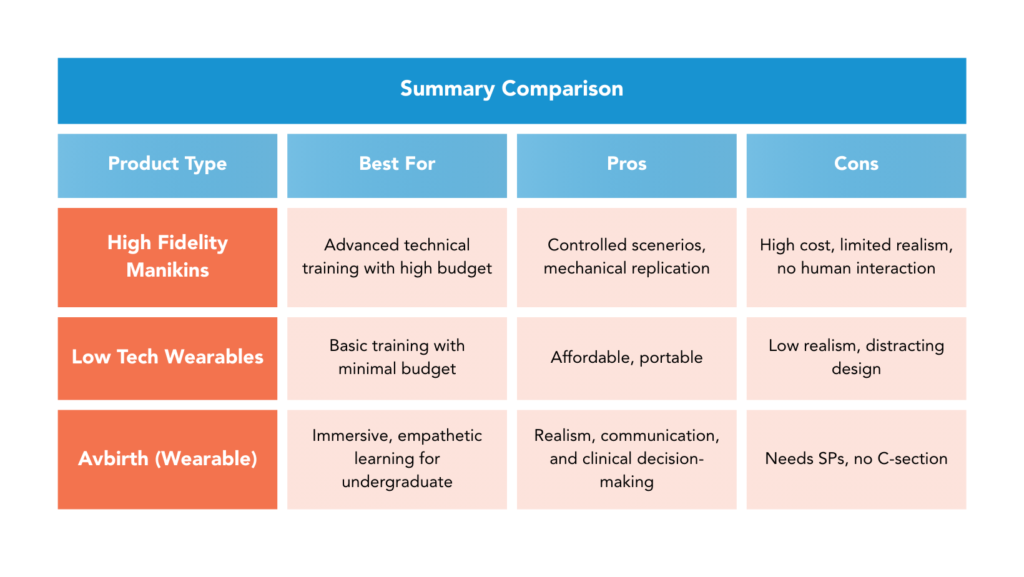
- For programs prioritizing mechanical practice in high-tech environments with unlimited budgets: High-fidelity manikins like Victoria are a suitable, albeit expensive, option.
- For programs needing only the basics on a tight budget: Low-tech wearables like MamaNatalie may suffice, but expectations should be tempered.
- For programs seeking realism, communication, and critical thinking: Wearable simulation with a standardized patient—Avbirth—offers the most balanced, immersive, and learner-centered experience. It delivers both the technical skills and the human element essential in preparing nurses for real-world childbirth scenarios.
Curious on how the Avbirth can help your Labor and Delivery simulation? Book a meeting below!
